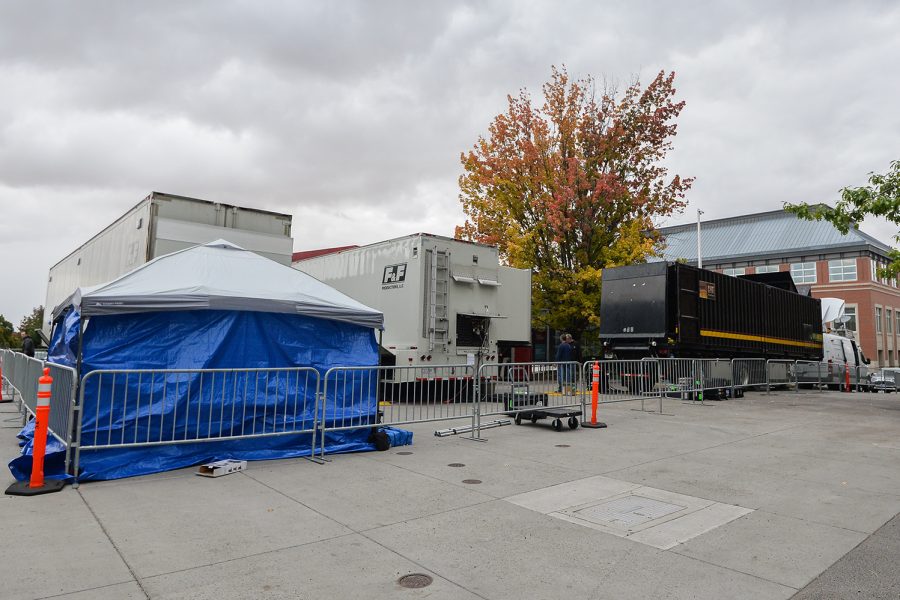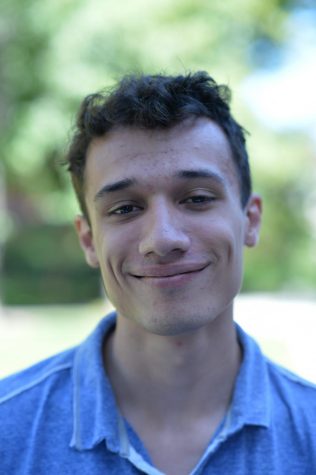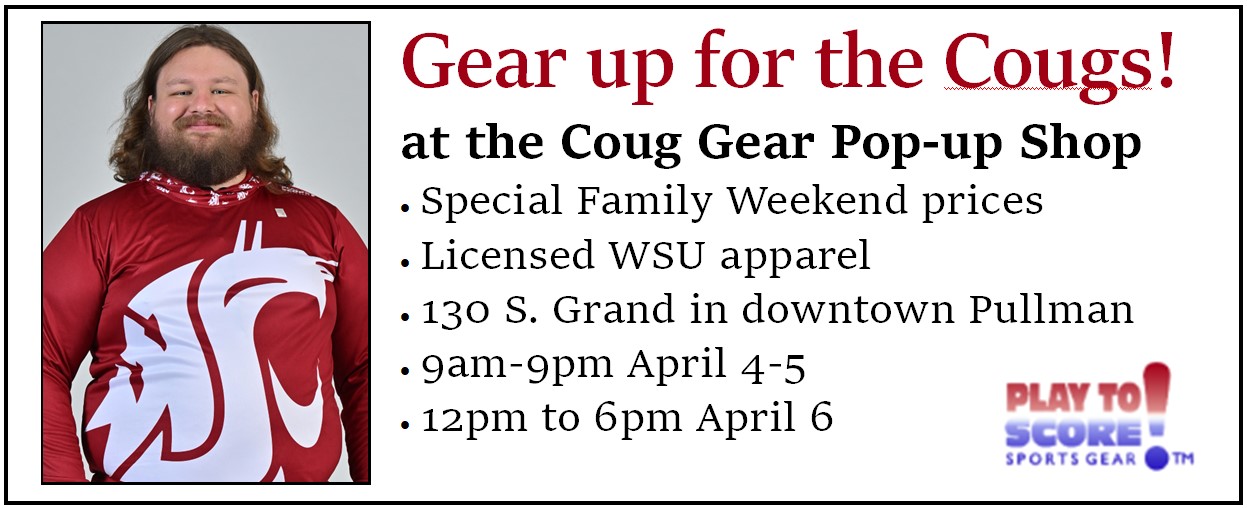Student raises issue with campus accessibility
ESPN crew took over space meant for those with disabilities
DAISY ZAVALA | DAILY EVERGREEN FILE
ESPN vehicles and equipment are surrounded by metal barricades and situated on accessibility parking spaces Sept. 20 at the Glenn Terrell Friendship Mall.
September 30, 2019
On the Sept. 21 game against UCLA, senior clarinet player Alex Kelley stepped onto the field in Martin Stadium to lead a group of students from the WSU Access Center.
Kelley, a student who is himself registered with the Access Center, was there with the other students to celebrate diversity at the WSU Marching Band’s halftime performance.
“They were all super excited,” Kelley said. “Not many people have the chance to go onto the field.”
What Kelley didn’t know was that at the same moment, ESPN’s production crew was using several of the accessible parking spots nearby.
The crew set up along Troy Lane in between the Jordan Schnitzer Museum of Art and Wilson-Short Hall, using up all seven accessibility spaces closest to the Compton Union Building.
Kelley doesn’t use the spaces himself, but said he was disappointed to see the parking spots meant for people with disabilities taken over by the production crew.
“I know it’s kind of a difficult thing to set up,” Kelley said. “But it’s insensitive to the people who need to park there.”
Shawn Deeds, senior associate director of athletics capital projects, events and facility operations, said this situation was not an issue until the art museum asked the university to change the parking layout.
Previously, production crews from ESPN or FOX parked in front of the art museum near its entrance, Deeds said.
Deeds coordinated with Pullman Fire Marshals and officials from the museum, the CUB and WSU Transportation Services to change the location to its current spot.
Deeds said it is hard to predict how much space production crews will need because he doesn’t know what kind of vehicles the crews will bring in.
“Sometimes we don’t know what’s happening until the day they come,” he said.
WSU Access Adviser Davi Kallman said the Access Center was not notified by Transportation Services and received a few complaints.
“It’s unfortunate that this happened on the same weekend where we tried to showcase our diversity,” Kallman said.
Deeds said he did not mean any harm by letting ESPN use the accessibility spaces and that the university is restricted to this location for production crews because of its proximity to the stadium.
“Events like this create havoc around the CUB unfortunately,” he said.
Goodwin said she understands that it is a big deal when ESPN comes to campus, but the university must create equal or better accessibility spaces if existing ones are taken.
“It’s a solved case if we move it to the other side of the road,” she said.
The environment and the hills the campus is built on make it difficult to provide accessibility to students, Goodwin said.
“The bottom line is this campus is not accessible,” she said. “We can’t just rebuild it on flat land.”
The Access Center was added to the department of community, equity, and inclusive excellence about a year and a half ago, Goodwin said. This was an intentional act to try to remove the medical model that people view disability through.
“The medical model basically says there’s something wrong with you that needs to be fixed,” Goodwin said.
Kelley, who represents the Access Center for the band, is diagnosed with autism, he said.
It can be difficult for him to talk about because of the societal stigma that is attached to the diagnosis, Kelley said.
“There seems to be a cultural problem with disabilities on campus,” he said. “I can’t shake this feeling that even though it seems to be accommodating, there’s something that’s not quite right.”
That feeling is the stigma that makes it difficult to get help, he said.
“I didn’t get the help I needed [from the Access Center] until my second semester of my freshman year,” Kelley said.
The Access Center provides accommodations and services to students with disabilities, psychological or medical conditions and temporary injuries, according to the center’s website.
Goodwin said the center tries to remove barriers created from the natural and architectural environments found at WSU.
“It’s really not about the person,” she said. “Our environment creates barriers.”
She said interior designers are doing better at reducing environmental barriers by creating intentional universal designs.
“The Spark is a great example,” she said. “Furniture is used differently so students don’t have to request an accommodation — in that scenario, those students no longer have disabilities.”
In a perfect world, she said, students would not have to request accommodations through the Access Center because the environment would be accommodating.
About 95 percent of the students the Access Center serves do not have physical disabilities. The stigma comes from these invisible disabilities, she said.
Stigma around invisible disabilities is created because they are harder to understand because the conditions are not seen, Goodwin said. Some people might be too precautious and may think a person is lying about having a disability, she said.
“The only way we can reduce the stigma is by consistently talking about it and bringing awareness to it,” Goodwin said.
While Kelley said he was excited that the marching band held its diversity demonstration, he said he was also disappointed the university allowed ESPN’s production crew to block off accessibility parking spaces two weekends ago.












Jake • Oct 1, 2019 at 7:39 am
This article really fails to serve it purpose. Half the article is about the stigma around invisible disabilities but that isn’t the issue at hand here. The issue is access to ada parking which was illegally blocked off. In order to receive a ADA permit one must have a mobility impairment that has been verified by a doctor, like myself. I wanted to watch the game in the CUB but could not due to lack of access. The article really should have included a discussion with the ADA coordinator from the Office for Equal Opportunity and what is being done to prevent this from happening again.
Tim Haight • Sep 30, 2019 at 11:10 am
I have arthritis, so it can be difficult for me to walk up the hill to Wilson-short when I need to go there. The Friday when ESPN took over all of the disability spots between Wilson-Short and the art gallery made if very difficult for those of us needing to park up there. I saw a few other cars searching for spots as well.
We have to pay Transportation services to use these spots. They should do something to make sure it does not happen again.